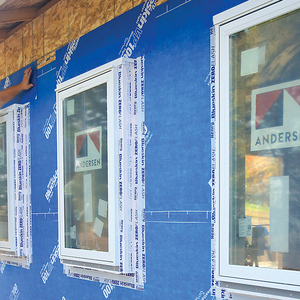I have a question about the old way of building load bearing brick walls. I am looking at a wall in Montreal which is very thick (2-1/2 ft) with a common bond brick layup. What type of brick is made used in the header course of the common bond. It seems to be longer than a modular, but the width and height are the same. Any suggestions would be great. Is there other ways of making these types of brick walls? What does the section look like through the wall?
Discussion Forum
Discussion Forum
Up Next
Video Shorts
Featured Story

Look closely at these common locations for hazardous materials in older homes.
Featured Video
Video: Build a Fireplace, Brick by BrickHighlights
Fine Homebuilding Magazine
- Home Group
- Antique Trader
- Arts & Crafts Homes
- Bank Note Reporter
- Cabin Life
- Cuisine at Home
- Fine Gardening
- Fine Woodworking
- Green Building Advisor
- Garden Gate
- Horticulture
- Keep Craft Alive
- Log Home Living
- Military Trader/Vehicles
- Numismatic News
- Numismaster
- Old Cars Weekly
- Old House Journal
- Period Homes
- Popular Woodworking
- Script
- ShopNotes
- Sports Collectors Digest
- Threads
- Timber Home Living
- Traditional Building
- Woodsmith
- World Coin News
- Writer's Digest


















Replies
I would imagine the 2 1/2 ft wall you are looking at is a party wall. The width and composition of these walls were mandated by city authorities quite early in Montreal's history after several catastrophic fires. These are remarkably stable - you have no doubt seen them exposed when attached houses are demolished leaving the oulines of rooms complete with plaster and wallpaper.
These walls are no longer used for several reasons. The amount of material needed, absence of insulation, and the code requirement for reinforcing in loadbearing masonry being chief among them.
Sorry I don't know much about how you would go about detailing a modern equivalent. If you wanted a good source of information on the way they were built, The Centre for Comtemporary Architecture on Dorchester has loads of old wall sections.